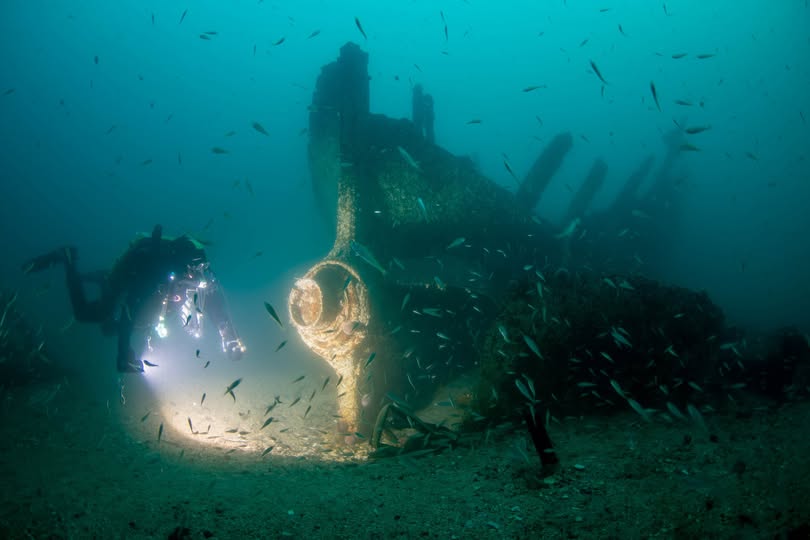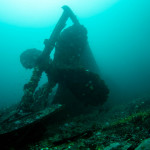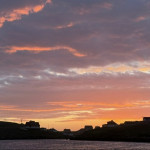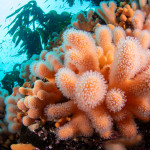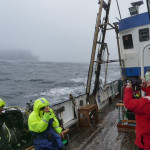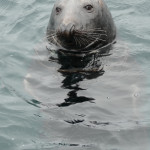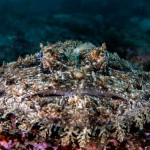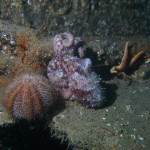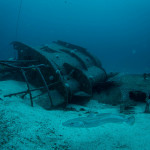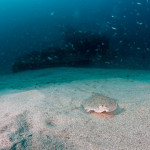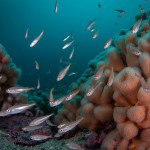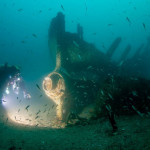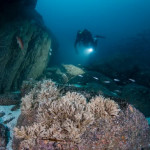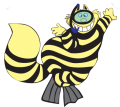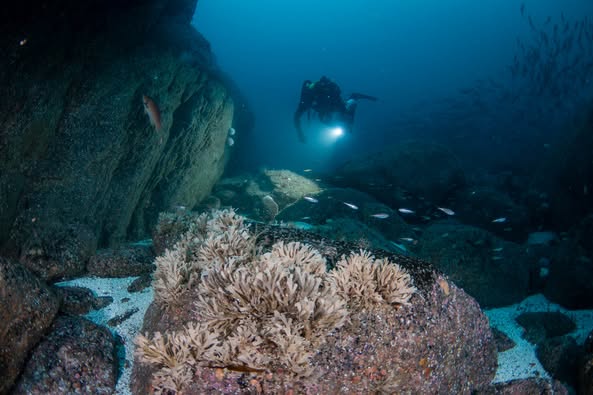Shetland - 23rd - 30th August 2025
We met at the terminal in Aberdeen, on Saturday afternoon to catch the overnight ferry to Lerwick. The dive container and baggage trolley were loaded, and we made our way onto the ferry to drop overnight bags in pre-booked cabins, before meeting up in the lounge. The crossing was relatively smooth. We docked at 7.30am, loaded a minibus and car with everyone’s kit and met skipper Bob Anderson at the harbour. Everything was craned onto the deck, dive kit set up, and bags taken below to our cabins. The modifications made to The Clasina mean that the kitting up area is larger and heated, with new racks for hood, gloves and boat coats and best of all, an indoor shower and toilet. We met Bob in the dining area where he outlined the plan for Sunday: a dive brief for the Fraoch Bahn, dive at 11am, meet for a full boat brief after lunch steam north for the second dive and continue northwards to moor up in Balta Sound. The aim was to stay ahead of the incoming strong South easterly winds.
Sunday: Fraoch Ban:
A fishing trawler lying in 27 metres of water, on a flat, white sandy seabed. It is still largely intact and upright with a slight list to port. The vis was 15m+ and the water temperature 13C. We dived in 2 waves as the wreck is small. It never disappoints. It was plastered with orange and white Plumose Anemones: shoals of juvenile Pollack darted in and around every structure. Edible and Velvet Swimming Crab occupied small spaces. As we disturbed the sand and shone a torch, Gobies, Dragonets and Plaice move towards the light. Best finds: Scorpion Fish, Tub Gurnards.
Coleieale Baas. A rocky pinnacle. The kelp line was around 25m. vis 15m+. Deadmens Fingers Plumose Anemones, Feather Stars, Antennae and Herringbone Hydroid, provided endless colour. Several walls were covered with Jewel Anemones. Cracks and crevices were home to Velvet Swimming Crab, Leopard Spotted Gobies and Squat Lobster. Best finds: Scallops, Ling, Conger Eel. Cat Shark, two huge Lobsters, one walking freely and the other brown with age,
We moored up in Balta Sound harbour. After the evening meal we walked up to see Bobby’s bus stop and the John Peel Memorial Island.
Monday E 49.
A submarine lying in 33m of water on a bright, white sandy bottom. The closed hatches are a poignant reminder that this is a war grave and the final resting place for 31 submariners. Much of the wreck is buried in the sand. The conning tower is at right angles to the hull, and the periscope extends horizontally. Shoals of juvenile Pollack shimmered in the crystal-clear water. Best find: Mature Ling several of which were free swimming.
The Jane:
A steamship lying in 25m on a sandy seabed. Main points of interest, twin boilers, two anchors, prop, rudder and winches. The sand was home to Gobies and Dragonets; a large shoal of Pollack circled above the kelp. We spotted Ballan and Cuckoo Wrasse, Ling and shoals of juvenile Pollack. We drifted away from the wreck across Maerl beds which were home to Sand Masons, huge Dahlia Anemones, Gas Mantle and Yellow Ringed Sea Squirts. As we moored up in Culinvoe seals came along side. Artic Skuas, Gannets, Shags and Kittiwakes flew across the harbour. Doug and Ruth were lucky enough to see an otter whilst out for an evening stroll.
Tuesday:
As the strong Southeasterly winds prevented diving on The East coast, the plan was to steam up the west coast towards the lighthouse at Muckle Flugga to look at dive sites around Noss Head. The cliffs were white with thousands of Gannets nesting on the cliffs. We watched as they circled above the boat. However. a mid-Atlantic storm had created a 3m swell and a surge which had waves crashing up the cliffs. It was wonderful to observe the power of the ocean in such an iconic location, but it definitely was not diveable. We headed south to locate Upskud, a pinnacle which Bob thought was in a more sheltered position.
Upskud: The kelp line was at 26m. Vis 15m+. The walls and gullies were covered in pink algae, Plumose and Jewel Anemones. A huge shoal of Pollack circled about the kelp. We spotted several flat fish on the ledges; however, the surge was significant, making buoyancy control a real challenge. After we were all back on-board Bob headed East into the sheltered waters of Blue Mull Sound for our second dive
Hascosay Sound a drift dive across a sandy seabed at 30m. Phil and I were diving in a 3 with Steve M. At 28m Phil began to signal “look behind you”. A large Stingray was inches from Steve’s head. It eventually settled on the sand. We dropped our air and watched it for ages. Gobies and Dragonets moved towards our torch light. Hermit crabs scuttled across the sand. Shoals of Sand Eels wriggled above the seabed and then another amazing moment as we drifted towards a Flapper Skate resting on the seabed. We topped off a brilliant dive with 2 Octopus, a Cat Shark and a Cling Fish hiding in an empty Horse Mussel shell.
We returned to Culinvoe Harbour to moor up.Wednesday:
We went back up towards Muckle Flugga but after 30 minutes it was obvious that there was no let-up in the swell and surge. Waves crashed up the cliffs and there were huge patches of foam swirling around. We turned around and went back to Linga Sound.
Linga Sound: a fast drift across a rocky seabed interspersed with boulders covered in Deadmens Fingers. Occasionally the current eased and we moved more slowly across beds of Brittle Stars. Best finds: flat fish, Octopus and Seven-Armed Starfish hunting for food.
Little Skerry a wall and boulder slope with the kelp line at 26m. Best finds Ling, Conger Eel, and a huge shoal of Pollack above the kelp.
We moored up in Out Skerry Harbour.
Thursday:
Muckle Skerry: a rocky pinnacle with the kelp line at 26m consisting of ledges, cracks, crevices and large, pink encrusted boulders. Best finds: Huge Edible Crab, Scorpion Fish, Squat Lobster, Ling, a large shoal of Pollack above the kelp and Mackerel beneath us on our safety stop.
Score Wall: a 40m stark and current swept site. The first part of the dive was hard work as we were finning into the current. Despite this we found juvenile Plaice, Ling, Angler Fish, Squat Lobster, Ballan and female Cuckoo Wrasse and shoals of juvenile Pollack.
We motored back to Lerwick Harbour. This gave everyone the opportunity to explore the town, go to the pub, eat ice-cream, buy presents etc.
Friday
Gwladmina : an iron steamship carrying coal, which sank in 1918. The wreck is mainly intact, upright and lying in 38m of water on a sandy seabed. The vis wasn’t the usual 20m+ as the harbour was being dredged. It was however quite atmospheric as torchlight illuminated the wreck and structures came into view through the gloom. The main points of interest were the engine, twin boilers, an open foc’sle containing hawsers, hoses and paint tins, an anchor chain, winch and gun.
Halm: a large boulder field sloping away to the seabed teeming with life. Best finds: 2 octopus, Catshark, a very large lobster, an equally large Edible Crab, Seven -Armed Starfish hunting Brittle Stars and 4 Long Legged Spider Crab, two of which were decorated with short red seaweed.
We returned to Lerwick to pack kit, transfer it onto the quayside ready for the taxi and minibus to take us to the terminal for the overnight ferry to Aberdeen.
This was a full-on, challenging week, diving sites in the most northerly islands in the UK.
(Shetland lie at 60 degrees of latitude- the same as parts of Alaska and the Norwegian coast,) The weather was against us but luckily The Clasina is a seriously capable and well-equipped dive boat with a superb skipper and a fantastic crew.
Thanks to dive buddies, Doug & Ruth, Helen & Steve, Clare & Simon, Mark & Anna and Steve M. for joining us and making it such an enjoyable week. Ruth’s first big cold water dive trip —what a triumph and one she passed with flying colours.
Pat & Phil.
Photographs by: Bob Anderson, Doug M and Clare M.
